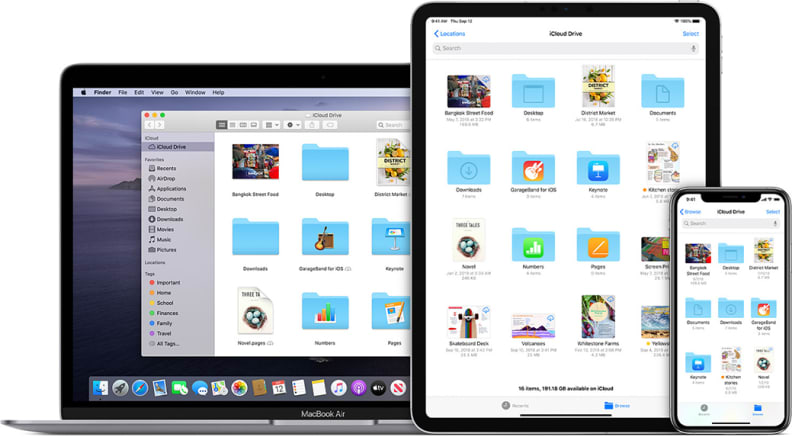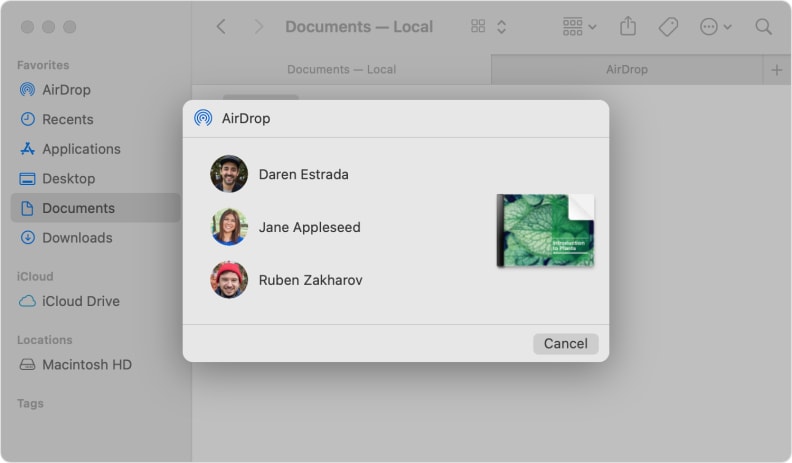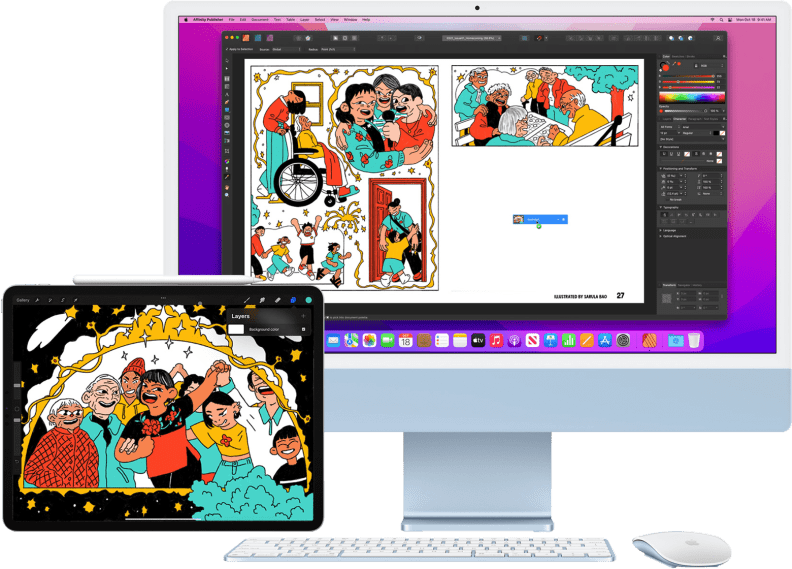How to share files and photos across all your Apple devices
No cables or port adapters are needed!
 Credit:
Reviewed / Betsey Goldwasser
Credit:
Reviewed / Betsey Goldwasser
Products are chosen independently by our editors. Purchases made through our links may earn us a commission.
Transferring files between our phones and laptops isn't always the easy task we'd like it to be. Dongles with slow transfer speeds, email file size limits, and spotty connections can all get in the way of getting your documents where they need to go. Even with all the right cables setting everything up can take longer than a quick wireless transfer.
But there's more than one way to wirelessly transfer your files between devices without old-fashioned cables or dongles—especially if you own more than one Apple device like a MacBook, iPad, or iPhone. Between iCloud Drive, AirDrop, and the recently-debuted Universal Control, Apple has a variety of handy ways to share your files and photos. Here's how they differ, and how to use each one.
iCloud Drive

iCloud Drive is your classic cloud storage service, and it's a reliable way to sync documents and photos across Apple devices.
If you like to keep things synced in the cloud, or you do more than just the occasional file share, you can use Apple's iCloud storage to keep your documents in order across all your devices without constant transfers. The free tier only comes with 5GB, though, and it fills up quickly, so you'll probably have to pay for a higher tier of storage if this is going to be your main method of file sharing.
To increase your storage, go into your iCloud settings. On iPadOS or iOS, you can find that by going to Settings > Your Name > iCloud, and on macOS it’ll be in the Apple ID section of System Preferences.
After that, you should be able to start stuffing your drive with all your files, in whatever organization suits your needs. Do note, though, that many iOS and macOS apps can directly plug into your iCloud Drive storage and start filling that up, so make sure to keep an eye on what's eating up your space and stay on top of it.
AirDrop

AirDrop lets you send files to nearby Apple devices, as long as both devices have AirDrop properly enabled.
If you need to send something to someone else's Apple device, or you need something from one of theirs, you can try out AirDrop. You'll have to enable it on both devices, first, though, which isn't too difficult.
On your Mac, select Go > AirDrop from the menu bar in Finder, and you'll see your Mac's AirDrop window. At the bottom, you should see some text that says "Allow me to be discovered by:" with three options: No One, Contacts Only, or Everyone. (Contacts Only is the safest option if you want AirDrop enabled.) From there, you should get a notification any time somebody tries sending something to your Mac via AirDrop.
If you want to send someone something from your Mac, make sure their device is close to yours, right-click on the file(s) you want to send, select Share, and then choose AirDrop. You'll see a little window pop up with any nearby devices with AirDrop enabled, and you can click on them to initiate the transfer. There's also an AirDrop section in the Finder app, and there you can drag files directly over any recipients in the window to start sending them over.
For iOS and iPadOS users running version 12 or later, there are two ways to change your AirDrop settings. In the Settings app, you can go to General > AirDrop, then choose between Contacts Only, Everyone, or having it completely disabled. From the Control Center, which you can access by swiping down from the top right corner of your device's screen, long press on the network settings widget (the one with your wifi and Bluetooth toggles), then long-press on the AirDrop button, where you'll find the same three options.
To share from your iPad or iPhone, tap the Share button for anything you want to send over, tap the AirDrop button, and as long as your devices are close enough to each other (up to about 30 feet) you should see their icon pop up in that menu. Once they've accepted the request, the transfer should start.
Universal Control

Universal Control is mostly a way to control multiple iPads and Macs with a single keyboard and mouse, but it's also a way to share files in a pinch.
If you like to keep your devices as connected as possible, you'll want to check out Universal Control, which is finally out of beta with iPadOS 15.5 and macOS 12 and is mostly a way to control multiple devices with a single mouse and keyboard. It’s a handy way to tie your devices together without jumping through a bunch of hoops, but that’s not all it can do; It’s a quick and relatively painless way to drag and drop files between your devices.
Once you’ve connected your devices and Universal Control is working, all you have to do is have a Finder window open on any Mac you’re using, and the Files app open on any iPad you’re using, and drag the files between the two.
Here’s the real magic, though: Say you want to take notes directly on a PDF you just drafted up on your Mac. You can open an app like GoodNotes on your iPad, select the PDF file on your Mac, and drag the file directly into your notetaking app of choice on your iPad.
This also works for Photos, so you could edit a bunch of pictures in Photoshop or Lightroom on your Mac, then drag them over to your iPad in just a few seconds without having to wait for things to sync on the backend.
The product experts at Reviewed have all your shopping needs covered. Follow Reviewed on Facebook, Twitter, Instagram, TikTok, or Flipboard for the latest deals, product reviews, and more.
Prices were accurate at the time this article was published but may change over time.


